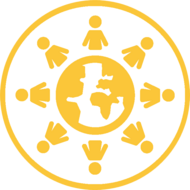Inaugurations and the White House: Classroom Resource Packet
(View Complete Item Description)An inauguration is the act or ceremony of bringing someone into a position or an office. Every president of the United States has been inaugurated, dating back to the first executive, George Washington. These inaugurations symbolize a peaceful transition of power between administrations. Although the Constitution provides an oath for the new president to take, all other elements of the modern presidential inauguration grew from traditions, changes, and preferences that evolved over 200 years. As the president's residence, the White House plays an important role in inaugurations. Gain a deeper appreciation of presidential inaugurations and transitions at the White House by learning about the history behind the Oath of Office, inaugural parade, parties, and more.
Material Type: Activity/Lab, Lesson Plan




















